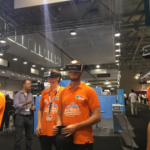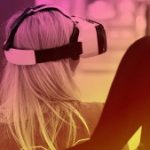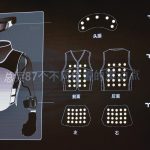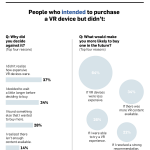Disney-backed VR startup Littlstar can map where VR, 360-degree video viewers are looking
Littlstar has developed a way to measure where people are looking in a VR experience or 360-degree video and can map those viewing patterns.
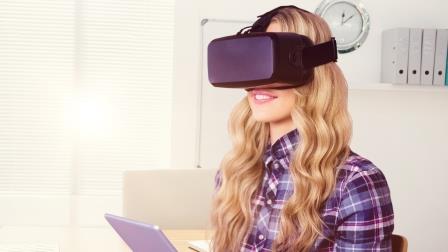
It’s not hard to call the 360-degree video ABC created for Lexus a success. In the two months since it premiered in early March, it’s racked up more than 2.2 million views on Facebook and almost a half-million on YouTube. But it is hard to know whether people actually noticed the Lexus LX and auto brand’s logo in the branded video.
To be fair, aside from eye-tracking studies and brand recall surveys, there isn’t really a way to measure whether people would have seen these brand images in a traditional TV or preroll ad. But it’s becoming possible in 360-degree videos and virtual-reality experiences.
Disney-based VR startup Littlstar has developed a way to measure where people are looking while immersed in a VR experience or watching a 360-degree video and is mapping those viewing patterns so that content creators and brands can track what is and isn’t grabbing people’s attentions.
The technology, and more importantly, the data it unearths, could be a significant catalyst for entertainment studios, production firms and brands still trying to wrap their heads around how people are wrapping their heads around the emerging medium. Unlike a normal video where everything that’s on screen could be considered in view, companies producing 360-degree videos and VR experiences have no idea what part of their content is being viewed. The viewers are also the directors.
“People are trying to figure out the language of VR, and directing users’ attentions is a huge part of that,” said Julia Sourikoff, head of VR and 360 video at production firm Tool, which has worked on 360-degree videos for brands including BMW, Converse and Comedy Central’s “South Park.”
To give themselves a better shot at guiding audiences through their all-encompassing entertainment, content creators do things to signal where someone’s attention should be, like lighting only part of a scene or having someone on screen point the viewers’ eyes in the right direction. They also test the videos on audiences during production, then quiz viewers on what they were paying attention to. “I wouldn’t say there is a technical process,” Sourikoff said.
Littlstar’s technology introduces a technical process. About a year ago, the company that participated in Disney’s 2016 startup accelerator program hired a data scientist to develop a way of measuring what people were most commonly looking at in a 360-degree video or virtual-reality experience. Several months later, it started testing the measurement with a few companies, including ABC and National Geographic, and has filed a provisional patent for its approach.
Unlike eye tracking studies and test audience surveys that are limited to a sample viewership, Littlstar can create these heat maps for all viewers, but with one big caveat. It currently only works for videos distributed through Littlstar’s VR service or a company’s own platform that has integrated its tech, but not videos viewed on Facebook or YouTube.
Littlstar’s heat maps aren’t necessarily infallible. The company doesn’t have a way to track what exact part of a scene each eyeball is fixed on at any given time because virtual-reality headsets don’t properly support eye-tracking, according to Littlstar CEO Tony Mugavero. Instead, the company’s technology tracks the center point of each field of view multiple times a second as audiences progress through a 360-degree video or VR experience.
“We know generally where people are looking,” said Mugavero. “If people are looking straight ahead but turn their eyes to the left, [the scene] gets blurry. So most people are keeping their eyes straight forward.”
Jeffrey Weinstock, VP and creative director for ABC’s integrated marketing department, likened the measurement boost from Littlstar’s heat maps to when TV shows went from being measured based on viewing diaries people kept and sent to Nielsen to overnight ratings. “It’s faster,” he said.
Littlstar’s viewability measurements could pave a path for media companies to create ad opportunities in 360-degree videos and VR experiences that brands could put money toward because their viewability could be measured.
“With all the discussion about viewability and engagement, here is a really exciting way to be able to showcase exactly what the engagement, what the viewability is of the sponsor’s assets,” said Weinstock.
Mugavero floated the eventual possibility of being able to use Littlstar’s technology to not only measure ad views but to determine where an ad should appear, possibly even in response to where someone is looking in the moment. But it’s still way early for that. Littlstar can track viewability in real time, but only on a small scale, according to Mugavero.
“Doing it with millions of viewers is a little bit more complex. We’re working to get to large-scale viewership in as close to real time as possible,” he said.
(Some images used under license from Shutterstock.com.)
Marketing Land – Internet Marketing News, Strategies & Tips
(21)





